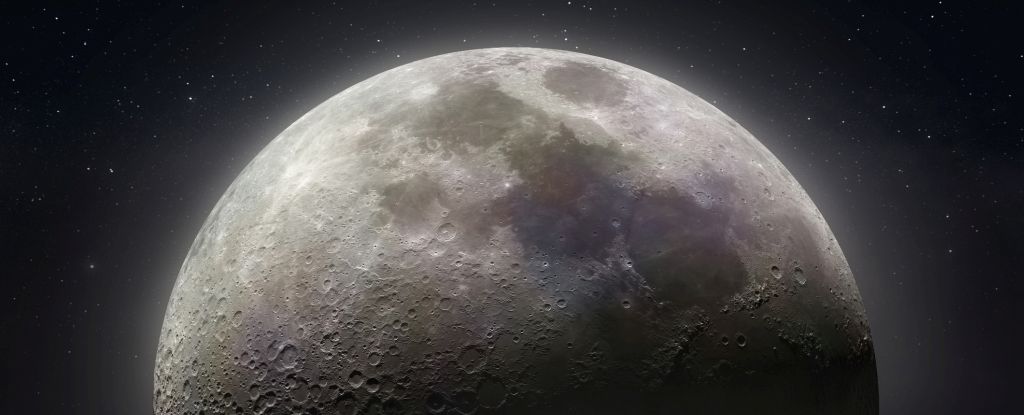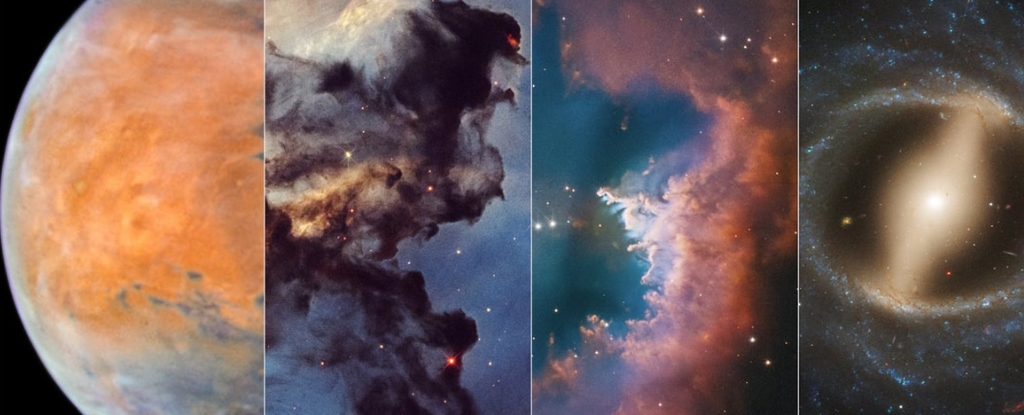Billions of years ago, so the theory goes, something around the size of Mars smacked into Earth, spewing a whole bunch of dirt into space that eventually coalesced to form the Moon.
This is called the giant impact hypothesis, and it gives us a neat explanation for a few curious properties that Earth and the Moon have in common, like identical minerals.
There’s just one problem. According to a new analysis led by planetary scientist Paolo Sossi of the Experimental Planetology group at ETH Zürich in Switzerland, we have absolutely no unambiguous evidence that such a giant impact ever took place.
“Rocks from the Earth’s mantle and the Moon are indistinguishable on the basis of every isotopic ratio that tracks the provenance of material in the Solar System,” Sossi told ScienceAlert.
“Because the isotopes of these elements vary widely among planetary materials, were there any trace of an impactor, we would expect to see small differences in their isotopic ratios. Yet, no such differences between the Earth and the Moon have been detected … hence we argue that, in the event of an impactor, the two bodies must have been perfectly mixed … or the Moon must have formed in a different way.”
That’s not to say, conclusively, that the giant impact didn’t happen. It’s still possible. It’s just… well, we can’t really assume it did, either. How the Moon formed may have just fallen back into the realm of mystery.
The evidence, available on preprint server arXiv and currently in press for the 2024 Treatise on Geochemistry, is based on a critical review of all relevant geophysical and geochemical evidence to date.
So if there was no collision, where could the Moon have come from? Sossi argues Earth and its large satellite simply formed from the same basic material, removing the need for any introduction of a hypothetical third body.
Earth and its Moon are unique in the Solar System. It’s the only system with two large spherical bodies with differentiated cores; the Moon is not much smaller than Mercury and, were it floating around on its own, may be considered a planet in its own right.
The Moon is also thought to have played an important role in helping life evolve. It helps stabilize Earth’s spin, and generates the tides that help the oceans circulate. Without the orbiting mass of rock, Earth would have been a very different place.
Because the Moon is both so rare and so important, scientists want to know how it got here. Its origins could shed light on our own story, and help us gauge the likelihood of how often such systems form out there in the wider Universe.
The giant impact hypothesis is not a bad one. During the early days of the Solar System, some 4.5 billion years ago, things were a lot more chaotic. There were way more rocks flying about willy-nilly, which we can ascertain from the craters left behind on the planets and moons that survived. So it’s not implausible that a baby Earth got whacked by something large enough to create a cloud of impact debris that formed the Moon.
The problem, Sossi and his team have found after examining the available evidence, is that Earth and the Moon are too similar. Elements on Earth and the Moon have ratios of isotopes – different forms of the same atom with varying numbers of neutrons in their nuclei – that are identical. And the more we examine, the more we find.
“Initially, this concordance was found only for the isotopes of oxygen, but more recently (since the early 2010s) this has been found to be the case for chromium and titanium – both of which are elements that are concentrated solely in the rocky part of the body,” Sossi explained.
“Furthermore, because the isotopes of these elements vary widely among planetary materials, were there any trace of an impactor, we would expect to see small differences in their isotopic ratios. Yet, no such differences between the Earth and the Moon have been detected.
“This has subsequently also been shown to be true for a host of other elements (e.g., iron, calcium, molybdenum, etc.) making the likelihood that this could have arisen through coincidence astronomically small.”
A recent study has shown that Earth and the Moon are also around the same age, or formed very close together, around 4.5 billion years ago. Taken together, the evidence suggests that the two bodies formed from the self-same cloud of material.
That’s not to say that an impact couldn’t have been involved; one model suggests that an impact pulverized the whole kit and kaboodle of whatever the baby Earth looked like, producing a donut of material that coalesced into two bodies, Earth and the Moon.
But giant impact models often predict small differences in the isotope ratios between Earth and the Moon. Those differences simply do not exist, according to existing data, meaning although a giant impact can’t be ruled out, we ought to exclude models that produce results inconsistent with the real geochemical data.
Even so, “The parameter space is essentially infinite,” Sossi said.
We just don’t know how Earth and the Moon came together from a clump of stardust 4.5 billion years ago. One way to probe it further is to investigate what’s inside the Moon, and that’s what Sossi and his colleagues are working on.
“The chemical and isotopic evidence is now sufficiently strong to start questioning the fundamental mechanisms of Moon formation,” Sossi said.
“We’re also pleased to see how interrelated the geophysical, geochemical and dynamical constraints can be in providing a new, holistic view of the formation of the Moon. We are able to communicate on mutual problems across disciplines, which will ultimately help us in finding a solution to this conundrum.”
The team’s research can be read on arXiv.





